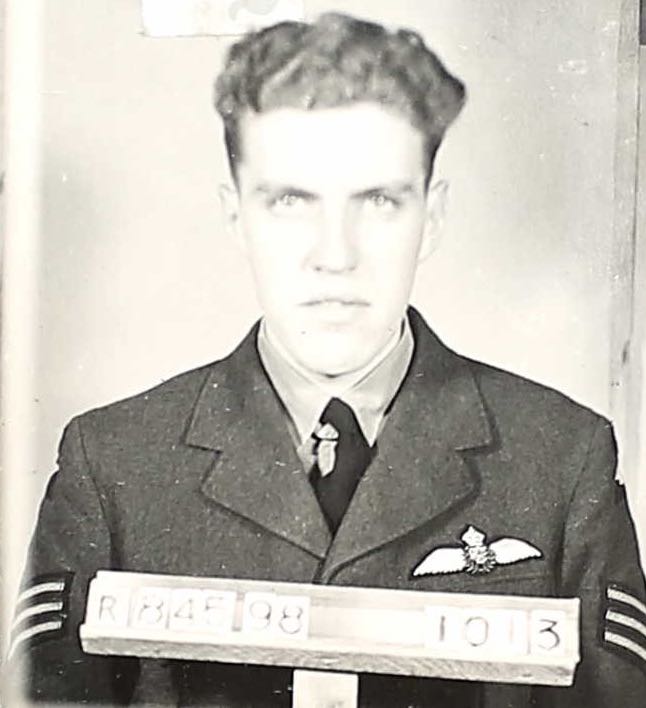
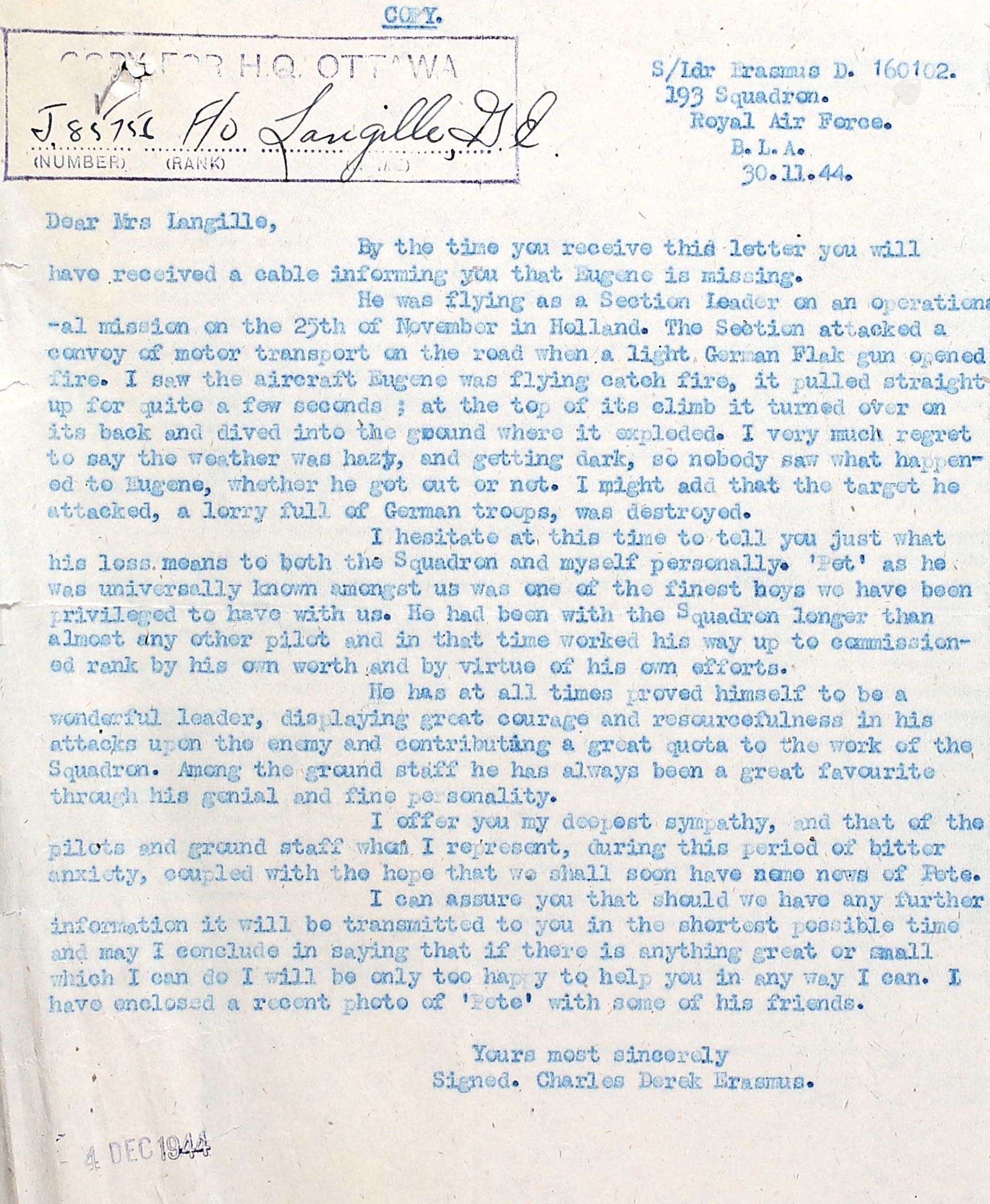
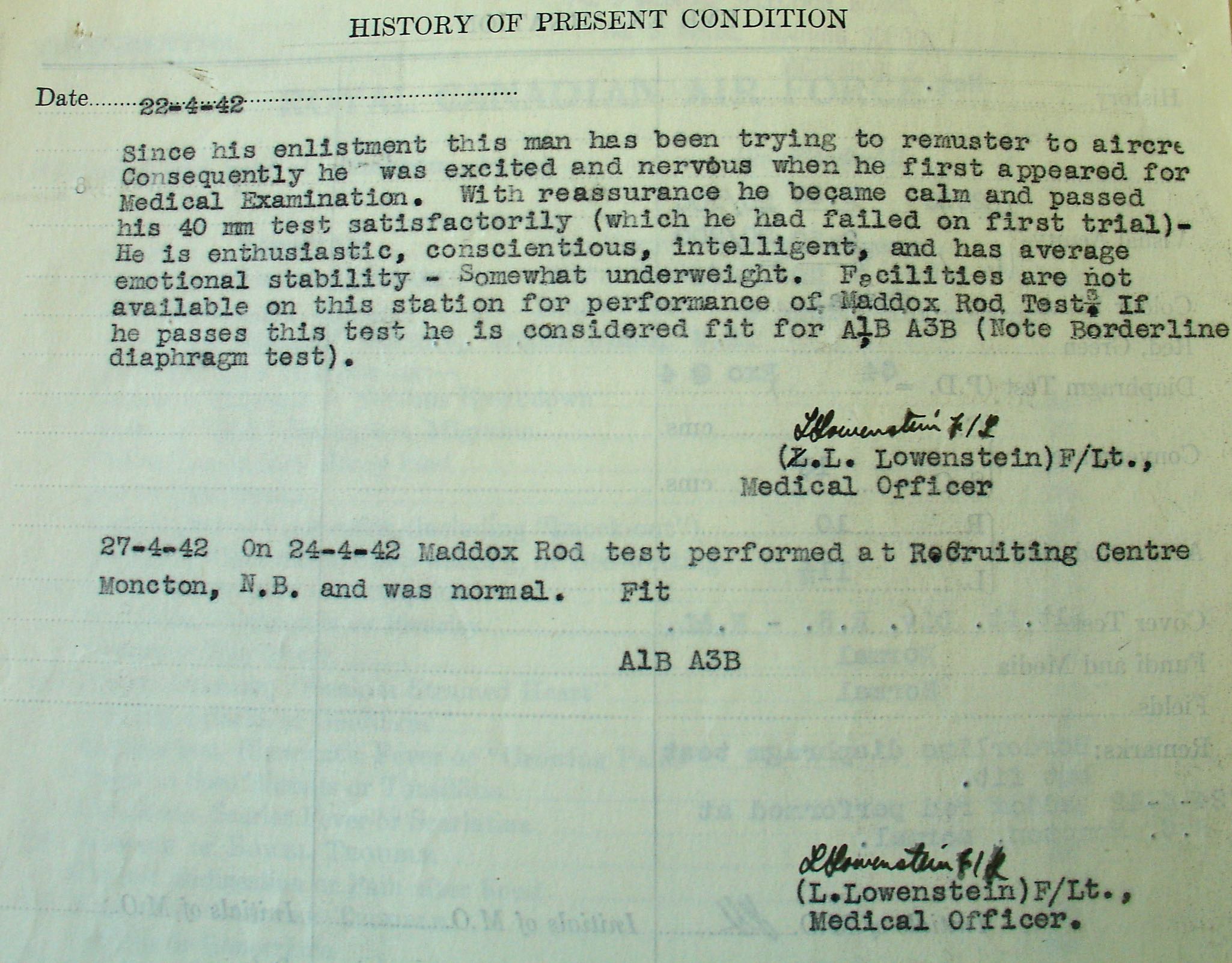
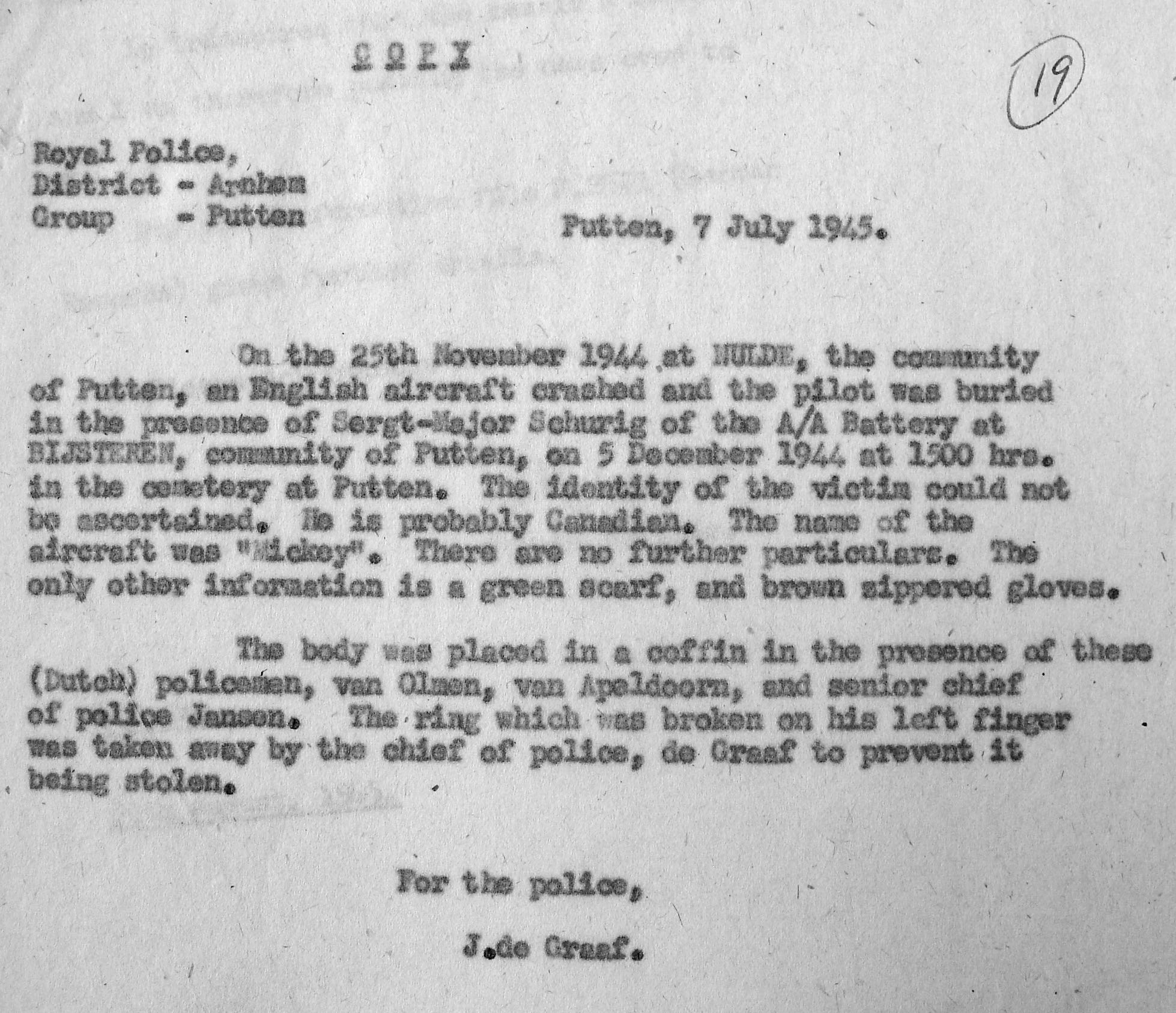
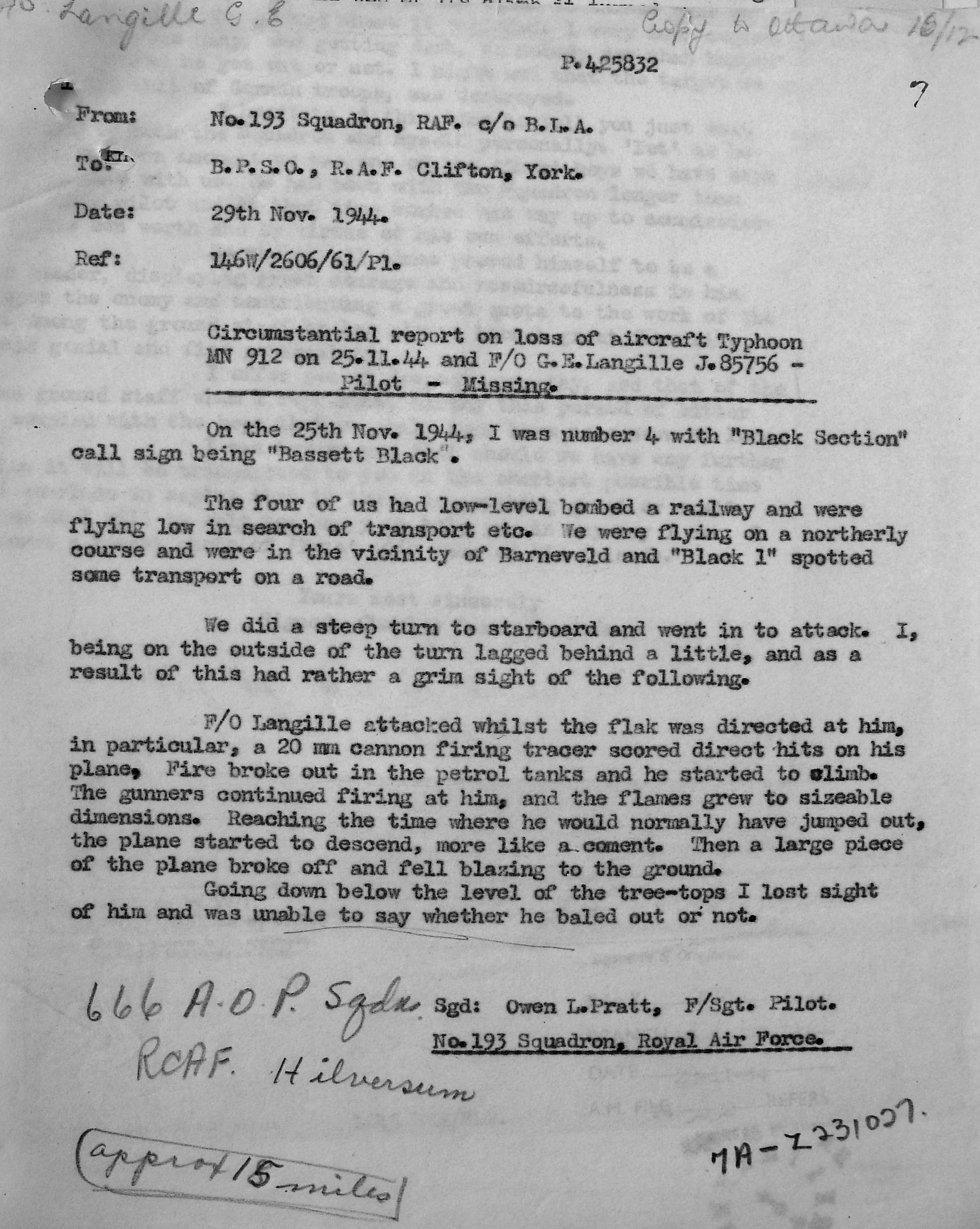
November 15, 1922 - November 25, 1944





George Eugene Langille was the son of Bamford Martin (salesman) and Helen Hetherington (nee McLaughlin) Langille of Saint John, New Brunswick. He had one sister, Mrs. Frances Manscom. The family was Church of England.
Langille was a customs clerk at McLean Kennedy, a steamship company from August 1940 to January 1941. He liked basketball, tennis, badminton, and swimming. He enjoyed making model aircraft and was an amateur photographer.
He stood 6' 1" tall, weighing 145 pounds. He had a fair complexion, blue eyes and brown hair. He started as a Clerk Steno "B" with the RCAF at No. 21 EFTS Chatham, NB.
Eugene Langille wanted to remuster. In April 1942, he was considered, "tall, rangy lad of smart airman appearance, good competitive sports background, plane modelling, hunting. Appears alert of reactions, mental and phyical; Would be responsible type. Should make a good observer or pilot."
He was accepted to train for pilot. At ITS: "Very intelligent. Cool and calm. Quick active and energetic. Good team worker. Determined and decisive." At EFTS: "Good student. Average performance. Turns weak, conscientious. Discipline excellent, keen and hard working. Should become high average pilot." At SFTS: "High average flying ability but inclined to be lax on detail. A type who will need supervision until experience is gained. Deportment and general bearing high average."
He left Canada on June 23, 1943 and arrived in the UK on July 1, 1943. He was sent to 55 OTU, then to 193 Squadron by Septeber 17, 1943. For a time, he was with 146 Squadron in France, July 1944.
On November 25, 1944, F/O Langille was flying as Section Leader on an operation in Holland flying Typhoon MN912. The Section attacked a convoy of motor transport on the road when a light German flak gun opened fire. Langille's aircraft caught fire, pulled straight up to possibly attempt a bale out, but at the top of its climb, it turned over on its back and dived into the ground and exploded. The weather was hazy and it was late in the day. No witnesses saw if he baled out.
F/Sgt Owen L. Pratt signed the circumstantial report. "On the 25th November 1944, I was number 4 with "Black Section" call sign being "Bassett Black." The four of us had low-level bombed a railway and were flying low in search of transport, etc. We were flying on a northerly course and were in the vicinity of Barneveld and "Black 1" spotted some transport on a road. We did a steep turn to starboard and went in to attack. I, being on the outside of the turn lagged behind a little, and as a result of this had rather a grim sight of the following: F/O Langille attacked whilst the flak was directed at him, in particular, a 20 mm cannon firing tracer scored direct hits on his plane. Fire broke out in the petrol tanks and he started to climb. The gunners continued firing at him and the flames grew to sizeable dimensions. Reaching the time where he would normally have jumped out, the plane started to descent, more like a coment (sic). Then a large piece of the plane broke off and fell blazing to the ground. Going down below the level of the treetops, I lost sight of him and was unable to say whether he baled out or not."
Charles Derek Erasmus wrote a letter to Mrs. Langille. "I might add that the target he attacked, a lorry full of German troops, was destroyed....'Pet' as he was universally known amongst us was one of the finest boys we have been privileged to have with us. He had been with the Squadron longer than almost any other pilot and in that time worked his way to commissioned rank by his own worth and by virtue of his won efforts....He has at all times proved himself to be a wonderful leader, displaying great courage and resourcefullness in his attacks upon the enemy and contributing a great quota to the work of the Squadron."
Captured German documents stated that an English aircraft crashed on November 25, 1944 at Nulde, the community of Putten, and the body which was recovered from the wreckage was buried at 1500 hours on the 5th of December 1944, in the cemetery at Putten. A ring that had been removed from the pilot's body, has been identified by the next of kin of F/O Langille, as having had belonged to him.
For more detailed information about Eugene Langille, please refer to the Vintage Wings story below.
LINKS: